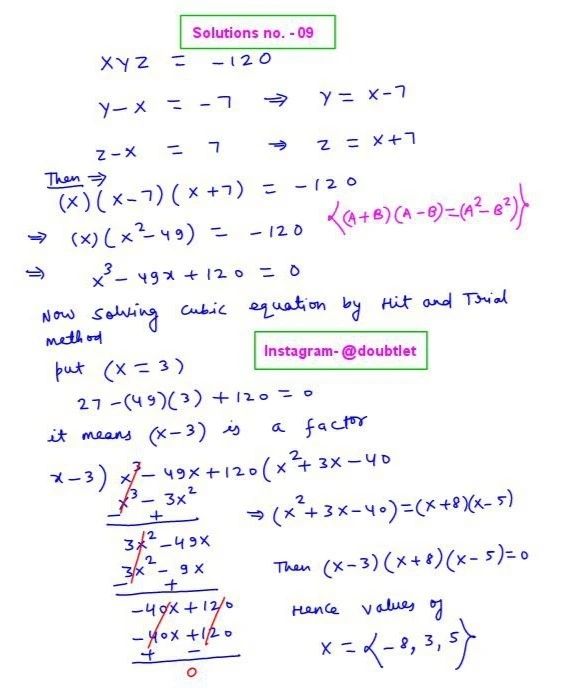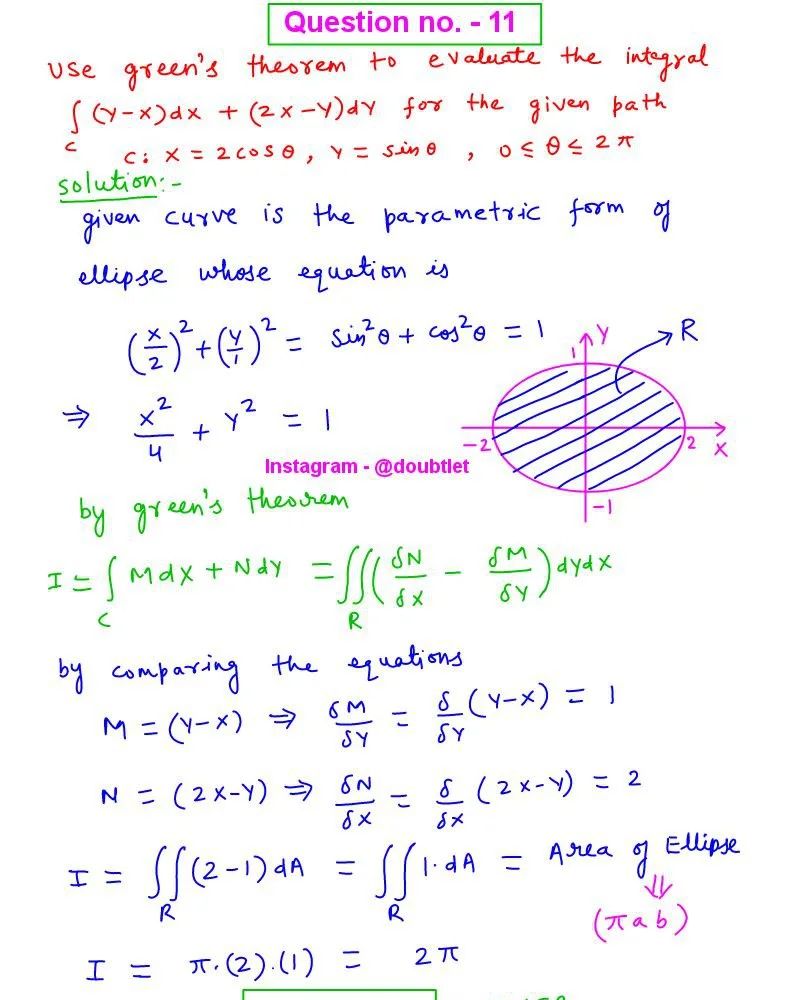









Sequence-and-series Formula Sheet
This page will help you to revise formulas and concepts of Sequence-and-series instantly for various exams.- Home
- Formula-Sheet
- Sequence-and-series
A sequence is an ordered list of numbers following a particular pattern, while a series is the sum of the terms in a sequence.
Neetesh Kumar | May 17, 2024
Share this Page on:
![]()
![]()
![]()
![]()
![]()
- 1. Arithmetic Progression (AP)
- 2. Geometric Progression (GP)
- 3. Harmonic Progression (HP)
- 4. Arithmetic Mean (AM)
- 5. Geometric Mean (GM)
- 6. Harmonic Mean (HM)
- 7. Arithmetic-Geometric Progression (AGP)
- 8. Properties of Sigma Notations
- 9. Some Important Summation series results
1. Arithmetic Progression (AP):
Arithmetic Progression is a sequence whose terms increase or decrease by a fixed number. This fixed number is called the common difference. If ‘a’ is the first term & ‘d’ is a common difference, then Arithmetic Progression can be written as a, a + d, a + 2d, ..., a + (n – 1) d, ...
- We can find n term of an Arithmetic Progression as where d =
- The Sum of the first n terms : where is the last term.
- We can also write n term as
- n term of an Arithmetic Progression is of the form An + B, i.e. a linear expression in n, in such case, the coefficient of n is the common difference of the A.P., i.e. A
- Sum of the first n terms of an Arithmetic Progression is An + Bn, i.e., a quadratic expression in n. In such case, the common difference is twice the coefficient of n, i.e., 2A
- Three numbers in Arithmetic Progression can be taken as ;
Four numbers in Arithmetic Progression can be taken as
Five numbers in Arithmetic Progression are
Six terms in Arithmetic Progression are etc. - If a, b, c are in Arithmetic Progression, then b =
- If and are two A.P.s, the sum and difference of these Arithmetic Progression is are also in Arithmetic Progression.
- Any term of an Arithmetic Progression (except the first & last) equals half the sum of terms that are equidistant from it. k < r
- If each term of an Arithmetic Progression is increased or decreased by the same number, then the resulting sequence is also an Arithmetic Progression having the same common difference.
- If each term of an Arithmetic Progression is multiplied or divided by the same nonzero number (k), then the resulting sequence is also an Arithmetic Progression whose common difference is kd & respectively, where d is the common difference of original Arithmetic Progression.
2. Geometric Progression (GP):
Geometric Progression is a sequence of numbers whose first term is non-zero & each of the succeeding terms equals the preceding terms multiplied by a constant. Thus, the ratio of successive terms is constant in a Geometric Progression.
This constant factor is called the common ratio of the series & is obtained by dividing any term by the immediately previous term. Therefore is a Geometric Progression with 'a' as the first term & 'r' as a common ratio.
- We can find n term of an Geometric Progression as
- Sum of the first n terms
- Sum of infinite terms of a Geometric Progression is when |r| < 1 (n )
- If a, b, c are in Geometric Progression loga, logb, logc, are in Arithmetic Progression.
- In a Geometric Progression, the product of the k term from the beginning and the k term from the last is always constant, equal to the product of the first and last term.
- Three numbers in Geometric Progression :
Four numbers in Geometric Progression :
Five numbers in Geometric Progression :
Six numbers in Geometric Progression : - If each term of a Geometric Progression is raised to the same power, then the resulting series is also a Geometric Progression.
- If each term of a Geometric Progression is multiplied or divided by the same non-zero quantity, then the resulting sequence is also a Geometric Progression.
- If and be two geometric progressions of common ratio and respectively, then and will also form a Geometric Progression whose common ratio will be and respectively.
- In a positive Geometric Progression, every term (except the first) is equal to the square root of the product of its two terms, which are equidistant from it, i.e., , k < r
- If is a Geometric Progression of nonzero, nonnegative terms then is an Arithmetic progression and vice-versa.
3. Harmonic Progression (HP):
A sequence is said to be in Harmonic Progression if the reciprocals of its terms are in Arithmetic Progression. If the sequence is a Harmonic Progression then Arithmetic Progression & vice-versa.
Here, we have the formula to find the n term but do not have the formula for the sum of the first n terms of a Harmonic Progression.
The general form of a harmonic progression is
- No term of any Harmonic Progression can be zero.
- If a, b, c are in Harmonic Progression or
4. Arithmetic Mean (AM):
If three terms are in Arithmetic Progression, then the middle term is the Arithmetic Mean between the other two, so if a, b, and c are in Arithmetic Progression, b is AM of a & c.
n arithmetic means between two numbers:
If a, b are any two given numbers & a, are in Arithmetic progression then are the n AM’s between a & b, then where
- Sum of n AM's inserted between a & b is equal to n times the single AM between a & b, i.e.
where A is the single AM between a & b i.e.,
5. Geometric Mean (GM):
If a, b, and c are in Geometric Progression, then b is the Geometric Mean between a & c i.e., b = ac, therefore b =
n Geometric Mean (GM) means between two numbers:
If a, b are any two given positive numbers & a, are in Geometric progression then are the n GM’s between a & b, then where
- The product of n GMs between a & b is equal to n power of the single GM between a & b i.e. where G is the single GM between a & b i.e.
6. Harmonic Mean (HM):
If a, b, and c are in HP, then b is HM between a & c, then
If A, G, and H are, respectively, AM, GM, and HM between two positive numbers a & b, then
- (A, G, H constitute a GP)
-
Let be n positive real numbers, then we define their
Arithmetic mean as A =
Geometric mean as G =
Harmonic mean as H =
It can be shown that Moreover, equality holds at either place
7. Arithmetic-Geometric Progression (AGP):
Sum of First n terms of an Arithmetic-Geometric Progression
Let
then
Sum to Infinity
If |r| < 1 and then
8. Properties of Sigma Notations:
where k is a constant.
9. Some Important Summation series results:
Sum of the first n natural numbers is =
Sum of the squares of the first n natural
numbers is =
Sum of the cubes of the first n natural numbers is =
Sequence and Series Calculators
Operation on Matrices
Matrices Formula Sheet


